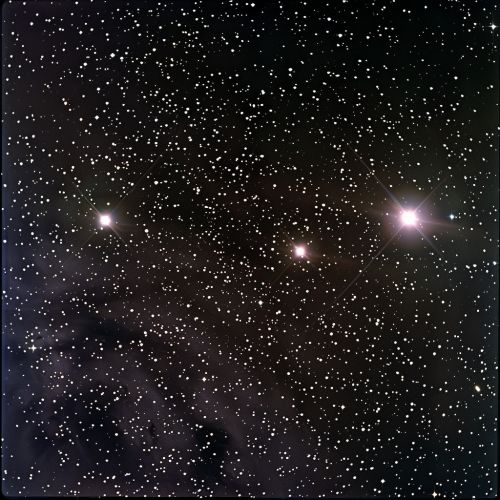Alpha Centauri Bb
Alpha Centauri Bb
Alpha Centauri Bb is an exoplanet that was reported to orbit the star Alpha Centauri B, one of the three stars in the Alpha Centauri star system. The discovery of Alpha Centauri Bb was announced in October 2012 by a team of European astronomers, but its existence has been a subject of debate and skepticism within the scientific community.


Discovery
The announcement of Alpha Centauri Bb's discovery was made by a team led by Xavier Dumusque of the Geneva Observatory. The team used the HARPS (High Accuracy Radial velocity Planet Searcher) spectrograph at the European Southern Observatory's La Silla Observatory in Chile. The detection method employed was the radial velocity method, which measures variations in the velocity of a star due to the gravitational pull of an orbiting planet.
The team reported that Alpha Centauri Bb had a minimum mass of about 1.13 Earth masses and an orbital period of approximately 3.24 days. This would place the planet very close to its host star, making it unlikely to be habitable due to extreme temperatures.
Controversy and Debate
Shortly after the announcement, other astronomers began to question the validity of the discovery. The primary concern was the signal-to-noise ratio in the data, which was very low. Some researchers suggested that the detected signal could be attributed to stellar activity or noise rather than an actual planet.
In 2015, a reanalysis of the data by a team led by Artie Hatzes of the Thuringian State Observatory in Germany cast further doubt on the existence of Alpha Centauri Bb. The reanalysis concluded that the signal attributed to the planet could be explained by stellar activity alone.
Characteristics
If Alpha Centauri Bb does exist, it would be classified as a terrestrial planet, given its Earth-like mass. However, its proximity to Alpha Centauri B would result in extreme surface temperatures, likely rendering it inhospitable to life as we know it. The planet's orbit would place it well within the star's habitable zone, where liquid water could not exist due to the intense heat.
Alpha Centauri Star System
The Alpha Centauri system is the closest star system to the Solar System, located approximately 4.37 light-years away. It consists of three stars: Alpha Centauri A, Alpha Centauri B, and Proxima Centauri. Alpha Centauri A and B form a binary star system, while Proxima Centauri is a red dwarf star that is gravitationally bound to the binary system.
Alpha Centauri A and B are both main-sequence stars, similar to our Sun, but with slight differences in mass and luminosity. Proxima Centauri, on the other hand, is much smaller and cooler. The system has been a prime target for the search for exoplanets due to its proximity and the similarity of its stars to the Sun.
Future Prospects
The search for planets in the Alpha Centauri system continues, with new instruments and techniques being developed to improve the sensitivity and accuracy of detections. The upcoming James Webb Space Telescope (JWST) and other next-generation observatories are expected to provide more detailed observations of the system, potentially confirming or refuting the existence of Alpha Centauri Bb and discovering other planets.
